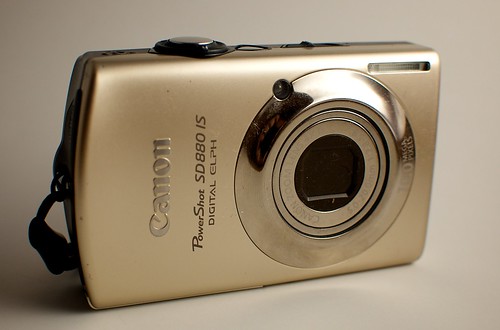Alex asked that I explain my workflow. It's pretty simple and rather short but this is how I post process my photos:
-
Plug camera directly into computer (yes I don't own a memory reader...yet).
-
Import into Aperture into an "archive" folder that has sub folders organized as YYYY/MM/DD. I do not let Aperture import photos into the Aperture library as I am worried about it corrupting. If the photos are just in a folder on the disk then I know they are safe (and can easily be backed up using Dropbox).
-
I have a problem: I now delete most of my photos. If they aren't perfect I get rid of them.
-
Process the best of the bunch. This is fast as I know the keyboard shortcuts and batch process things like white balance as much as I can. Usually I:
- fix the exposure and levels
- add some vignette (I love that look)
- a touch more contrast (I like contrast)
- and sharpen (using edge sharpen)
If it was shot at a high ISO I add noise reduction. If the photo needs saturation and has people in it I add vibrancy. If it needs saturation and has no people in it then I add saturation but very lightly. The difference between the 2: saturation will cause issues with reds and skin tones looking unnatural but is great for greens and blues, vibrancy is like "smart" saturation in that it won't touch skin tones.
-
Export to JPG. The photos are organized into an "export" folder that has sub folders organized as YYYY/MM/DD just like the "archive" folder. This folder is not backed up and is periodically expunged.
-
Upload to Flickr. Tag, place on a map, etc.
That's it. Each photo takes about 30 seconds to process. Aperture makes it really easy to fix the white balance on a single photo and batch apply the same operation to others shot in the same conditions. I don't do anything fancy in Aperture like tag/rate/organize. I'd rather do the organization on the filesystem and tag on Flickr.
Oh and Alex asked about equipment also: Nikon D40, 18-55mm, 35mm 1.8, 55-200mm VR. Lately the 35mm 1.8 stays on my D40 all the time. Leave a comment if you have any questions or tips for me.
Update: my workflow hasn't changed but I've got new gear. Now I use a Nikon D700, 16-35mm, 50mm 1.4, and 70-300mm VR. The 16-35mm is my workhorse but I switch to the 50mm when the light goes down.

